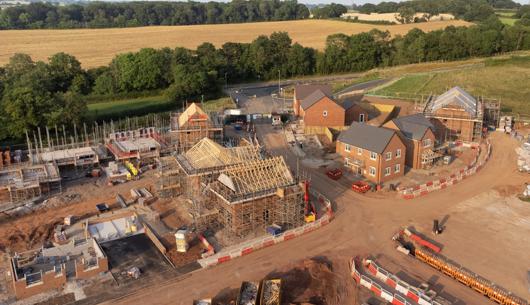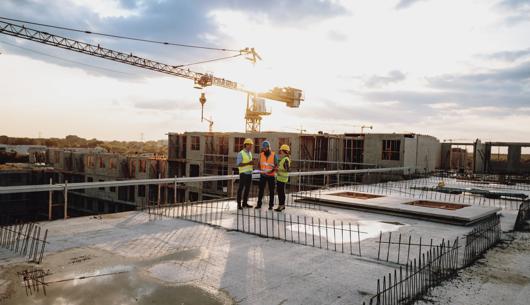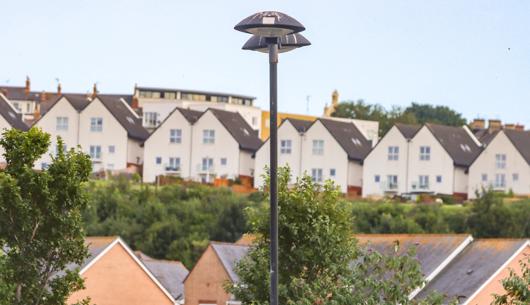As of today, the Department of Education published a list of 156 schools and colleges where the presence of Reinforced Autoclaved Aerated Concrete (“RAAC”) was confirmed.
School leaders will be keen to know whether this issue affects their settings, and what to do if it does.
How do we know if we have RAAC in our building?
RAAC was used in construction between the 1950s and 1990s, mostly in flat roofing, but also in floors and walls. RAAC is a cheaper alternative to standard concrete, and its short usable lifespan, (estimated to be as low as 30 years,) means that its use in permanent buildings is now causing deterioration to the fabric of those buildings, and indeed the risk of collapse.
If your buildings, or parts of your buildings, were constructed within that period, and you think you there is any chance you have RAAC on site, you should consult a suitably qualified professional (such as a structural engineer) to obtain a survey upon whether the school building contains RAAC. You should also seek advice within the survey on the building’s current condition and whether any appropriate management or remediation strategies can be put in place, or whether use of the building, (or part of the building,) needs to cease.
This online questionnaire can be submitted to the DfE to consider arranging a professional survey for your school.
What are our health and safety duties?
Employers at schools have significant duties under health and safety legislation including duties to ensure, so far as reasonably practicable, the safety of staff, pupils and visitors to the school. This can extend to the safety of buildings and the school estate. Owners and occupiers of school buildings may also have safety-related duties.
The DFE have produced guidance regarding RAAC and this should be factored into any assessment of the risks posed by RAAC. Questions employers and others should consider when conducting risk assessments include:
- what is the risk?
- Has it been reduced to the lowest level possible?
- Is the risk so great we must restrict access to areas affected?
- What is the probability of harm and the severity of potential harm, and can people in the building be protected?
A building survey can of course inform these assessments.
If our school building is affected, whose responsibility is it to repair them?
In order to establish this you will first need to establish how you occupy the property on which the buildings are constructed, i.e. whether you occupy:
- as freehold owner;
- as tenant under a lease; or
- by virtue of some other agreement, perhaps a licence to occupy, or other more informal arrangement.
Freehold Owner
If you are the freehold owner, then liability for the maintenance and repair of the building will fall on you, and you will be responsible for the safety of those who enter the property.
Tenant under a lease
If you are the tenant, the responsibility for building repair will be set by the provisions of your lease. Most academies’ leases will follow the form of the DfE’s standard academy lease, which provides:
- The tenant (i.e. the academy trust) is required to make good “any deterioration to the condition of the Property”. So, if your RAAC is deteriorating, you must repair that deterioration (see clause 3.3.1 of the standard lease). The lease only therefore requires you to make good any deterioration to the condition, so if you can show there has been no deterioration in the condition, then you have no obligation to repair. However deterioration of RAAC is often not apparent until failure occurs, and it is unlikely that a structural surveyor would provide an unqualified report on any building that contains RAAC, in any event, it is unlikely that any trust would be happy to let children occupy a building containing RAAC, given the current publicity surrounding the risks of doing so.
- The landlord may inspect the property and serve notice requiring any breach of a tenant’s repair obligation be addressed. If such a repair relates to a safety issue, then the tenant is required to commence the necessary works within 56 days. Clearly this may present very significant issues for you in terms of availability of both funding and contractors to undertake the necessary work.
- The tenant is required to notify the landlord of any structural damage to the property, or of anything that might adversely affect health and safety at the property (see clauses 3.3.2 and 3.7 of the standard lease).
- Some works of rectification may amount to alterations, which will require the consent of the landlord under the terms of the lease.
It is important to underline that the above is a summary of the standard position under the DfE’s model academy lease, and that it is crucially important that you review the terms of the particular lease you hold.
Some leases will contain very different obligations, in particular if you have a lease of part of a building, or if you lease is for a shorter period, in which cases you may not be responsible for structural repairs.
Licence or other more informal arrangement
As a licence or other more formal arrangement is likely to be for a shorter period, it will often not impose obligations on you to undertake structural repairs. If that is the case, you will not be liable for these repairs. That said, if you require the space in order to provide educational services, then in practical terms this will still present real problems for you, particularly if the informal arrangement is silent on the responsibility for structural repairs.
Clearly the range of different arrangements is wide, and it is impossible to provide generic advice. However, it is important that if you do occupy under such an arrangement, you seek legal advice to establish who is responsible for structural repairs, and whether you will have to continue to pay any licence fee if the property cannot be occupied while those works are being carried out.
Will I need planning permission or listed building consent when undertaking works?
It is important to establish whether the steps proposed to tackle any RAAC present will have implications under the Town & Country Planning system.
Demolition
Whether or not a specific proposed demolition requires any planning consent should be checked with a planning specialist, it may not be, but that is not always the case.
Historic Buildings
Is the building a listed building? It may be relatively unlikely, but again needs to be checked, because it if is, works and/or alterations require separate listed building consent. Alternatively, is the building in a Conservation Area? This would be likely to have implications under the Town & Country Planning system.
Planning Consent for New Building
If a building is demolished a separate fresh planning permission is likely to be required for any replacement building and the position should certainly be checked.
If substantial works are required, we recommend that a planning specialist is engaged as early as possible to discuss the proposals and to advise on compliance with the planning requirements. You should note that if planning permission is required it will take time to compile and submit the application, and further time for the application to be determined… think months rather than weeks.
Can I claim under warranties provided at the time the building was constructed?
Given the time passed since the widespread use of RAAC, and its limited intended lifespan, it is very unlikely that construction warranties will cover RAAC-related structural issues.
Will my insurance cover the cost of works?
Deterioration of RAAC is very unlikely to be considered an insured risk, but rather a maintenance and renewal issue, so in most cases neither standard insurance policies nor the RPA will provide cover for repairs Indeed, the RPA membership rules specifically exclude losses caused by “gradual deterioration” and “defective or faulty design”.
When will we receive financial support to address RAAC-related issues?
Guidance published last month by the DfE stated that funding would be provided for all mitigation works that are capital funded.
At present, given the number of schools affected, and the risk that this represents to children in the classroom, we would hope that this was an issue which could be resolved swiftly through central government action. That said, given the risk that the number of affected schools increases, it is important that the sector presses the government for clear timelines for the completion of remedial works, enabling children to be back in their classrooms.
How soon can we get the children back in the building?
Clearly this will depend on the availability of funding and the availability of suitably-skilled contractors to carry out the work. It is also important to understand if there are other aspects of your particular situation which may impact timing, such as the need for landlord’s consent, or the need for planning permission or listed building consent, so these aspects can be managed so as to reduce any time when the building is out of use.
What are the wider issues in relation to the condition of the school estate?
RAAC is an urgent issue for those affected, however even for those not affected this is a clear reminder to pay close attention to the state and condition of school buildings. The National Audit Office recently reported that around 24,000 school buildings are beyond their initial estimated design life, and around 700,000 pupils are in a school that is likely to require significant refurbishment.
Support
We would be very happy to discuss any issues arising for you or you trust from the matters set out above. Browne Jacobson is on hand to advise on all related legal issues, including:
- Lease interpretation
- Construction contracts for remediation or demolition and rebuild works
- Sourcing of temporary buildings or alternative space
- Insurance claims









































